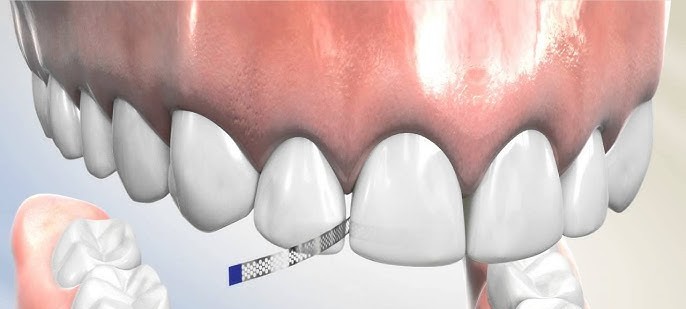"IPR (Interproximal Reduction): Is It Safe and Why Is It Needed?"

written by Dr Shaik Farhatulla, Reviewed by Dr satish Chandra date: 08.07.2025 "IPR (Interproximal Reduction): Is It Safe and Why Is It Needed?"
Interproximal Reduction (IPR) is the process of gently removing a small amount of enamel from the sides of selected teeth to:
Create space for tooth movement
Help relieve crowding
Improve bite alignment
Minimize black triangles (spaces between teeth after alignment)
The amount removed is minimal—usually between 0.2 mm to 0.5 mm per contact point—and is done using abrasive strips, discs, or burs.
Reference: Zachrisson BU, et al. (2007) confirmed that up to 50% of interproximal enamel can be safely removed without causing tooth sensitivity or decay when done conservatively.
Source: Zachrisson BU, et al. Interproximal enamel reduction: guidelines for decision making. Am J Orthod Dentofacial Orthop. 2007.
🧪 Is IPR Safe?
Yes, IPR is safe when performed by trained dental professionals following established protocols.
✅ Studies have shown that:
The outer enamel layer is thick enough (up to 2.5 mm) to allow minimal reduction without causing harm
Proper IPR does not increase the risk of cavities, as long as enamel is polished and fluoride exposure is maintained
There is no long-term sensitivity or damage to pulp tissue with controlled IPR
Reference: Sheridan JJ (2004) demonstrated that carefully performed IPR does not weaken teeth or increase caries risk.
Source: Sheridan JJ. Air-rotor stripping. J Clin Orthod. 2004.
⚙️ Why Is IPR Needed in Orthodontics?
🦷 1. To Create Space for Crowded Teeth
When the dental arch is too small for the size of the teeth, IPR helps create room without extracting teeth.
🎯 2. To Improve Tooth Alignment
IPR helps achieve a straighter alignment and better arch form, especially in cases of mild to moderate crowding.
📐 3. To Enhance Bite Correction
By reducing slight enamel amounts, IPR can help fine-tune occlusion and correct tooth-size discrepancies.
🔳 4. To Avoid Extractions
IPR is often a conservative alternative to tooth extraction, preserving natural tooth structure while still achieving alignment goals.
💫 5. To Reduce Black Triangles
After orthodontic correction, some patients are left with triangular gaps near the gums. IPR can reshape contact points to minimize these.
Reference: Rossini et al. (2013) concluded that IPR is an effective tool to improve outcomes in aligner therapy when spacing is limited.
Source: Rossini G, et al. Efficacy of clear aligners in controlling orthodontic tooth movement: a systematic review. Angle Orthod. 2015.
⏳ How Much Enamel Is Removed?
Usually 0.2 mm to 0.5 mm per contact
Maximum cumulative reduction is 2–3 mm per arch in most cases
It’s less than 10% of total enamel thickness—well within safe limits
🧼 Does IPR Require Special Care?
After IPR:
Teeth are polished and remineralized
Fluoride treatments may be recommended
Normal oral hygiene should continue—no special products needed
🚫 When IPR Might Not Be Recommended
Patients with very thin enamel
Teeth with existing decay or damage
Uncooperative children or patients with high sensitivity
In such cases, alternative treatment options like expansion or extractions may be explored.
📚 References
Zachrisson BU, et al. Interproximal enamel reduction: guidelines for decision making. Am J Orthod Dentofacial Orthop. 2007;131(3):362–368.
Sheridan JJ. Air-rotor stripping. J Clin Orthod. 2004;38(10):546–548.
Rossini G, et al. Efficacy of clear aligners in controlling orthodontic tooth movement: A systematic review. Angle Orthod. 2015;85(5):881–889.
Proffit WR, Fields HW, Sarver DM. Contemporary Orthodontics. 5th ed. Mosby Elsevier; 2012.
